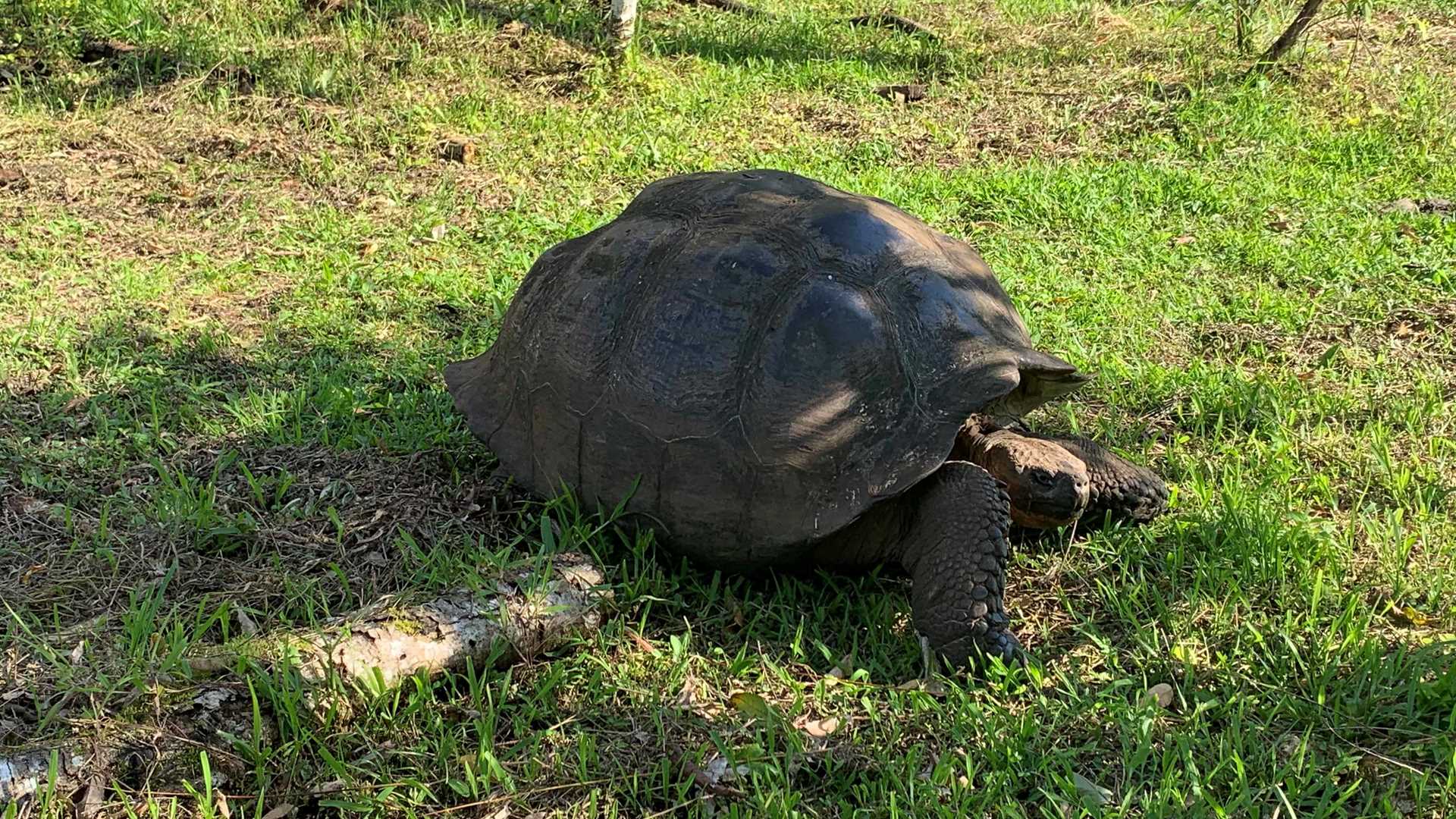Today, we woke up at Santa Cruz Island. This one of the largest islands in the archipelago, where we also have the most active human settlement, home to about 22,000 people. Our day started early, leaving the ship to go to visit the facilities of the National Park Breeding Center. This is where we went to see for the second time the giant tortoises of the Galapagos, and to learn more and see first-hand what the national park is doing to recover the original populations of these giants, who were decimated by human activities in the 17th and 18th centuries. We also got to know more about the Charles Darwin Research Station programs and research they are doing in the islands.
After some free time in town in which our guests had the possibility to walk around and to understand how local people live on island, we took buses to go to a local farm where sugar cane is harvested, learning about the process of fermentation and distillation of sugar cane into moonshine. There we also observed our local organic coffee been harvested, dried, roasted and ground. We had a chance to taste of all local products, some guests had coffee, and many had rum!
We had lunch and relaxed for a little bit with native highlands vegetation before taking off to our next adventure—visiting the giant tortoises native of Santa Cruz Island in the wild! We had a great time walking in the grass, finding tortoises in the area in their natural habitat. We found some individuals that were over 400 pounds, with majestic shells, simply staring at us. The most adventurous travelers immersed in the depths of the lava tunnels, and after an extra coffee cup, we headed back to town, where some people guests decided to either go back to the ship to relax or take advantage of the opportunity to explore town for a little more.
The perfect way to finish our day was with local musicians, engaging our guests to enjoy music and some of their art. This was probably one of the most exciting days of our expedition, and we are looking forward for more adventure and magic in the Galapagos Islands.







